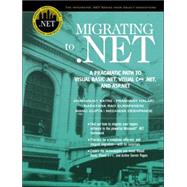
All authors work at Patni Computer Systems, Ltd.
DHANANJAY KATRE is a senior software specialist. A key member of Patni's .NET Technology Group, he is responsible for formulating .NET migration methodologies. He received a spot appreciation award within Patni for his contributions.
PRASHANT HALARI is a senior software engineer. He focuses on product development. A key member of Patni's .NET Technology Group, Prashant received Patni's Valuable Contribution Award for his work in developing .NET migration methodologies.
NARAYANA RAO SURAPANENI is a senior software engineer. He is a Microsoft.NET Global MVP, MVP in spotlight and is also a Microsoft Certified Solution Developer and a Sun Certified Java Professional. Narayana leads .NET and Web Services technology group at Patni.
MANU GUPTA is a senior software engineer. He specializes in the areas of Web Services and Microsoft .NET compact Framework. He was involved in developing .NET migration methodologies especially for VC++ .NET.
MEGHANA DESHPANDE is a software engineer. She was responsible for developing migration methodology and preparing white papers for migrating ASP applications to ASP.NET within Patni.
The New copy of this book will include any supplemental materials advertised. Please check the title of the book to determine if it should include any access cards, study guides, lab manuals, CDs, etc.
The Used, Rental and eBook copies of this book are not guaranteed to include any supplemental materials. Typically, only the book itself is included. This is true even if the title states it includes any access cards, study guides, lab manuals, CDs, etc.